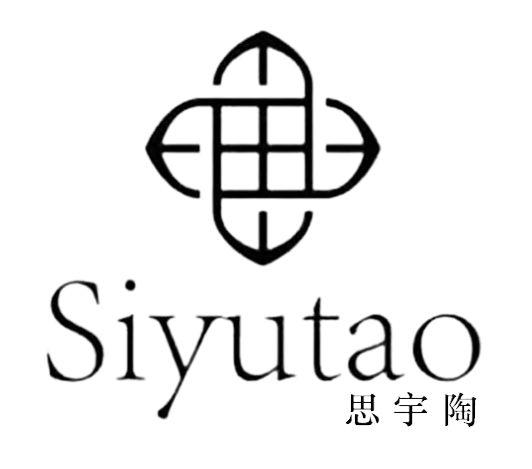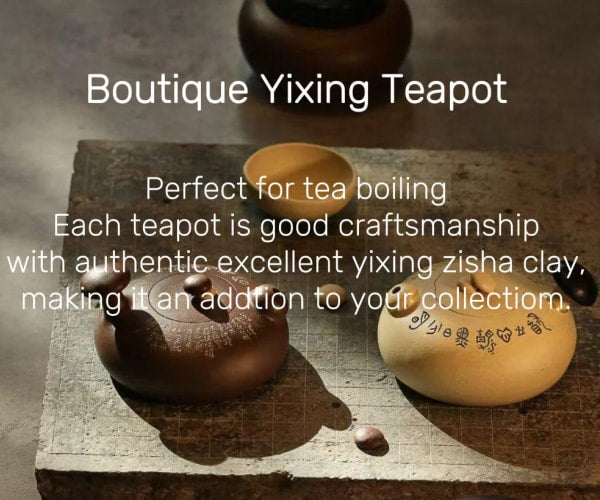Yixing Zisha Teapot Fired Kilns
Table for contents
1.temperatures
2. Dragon Kilns
3. Downdraft Kilns
4. Tunnel Kilns
5. Push Plate Kilns
6. Electric Kilns
From raw clay to masterpiece, the firing process is the defining step that breathes life into Yixing zisha teapots. Known as the "art of fire" among craftsmen, this ancient technique has evolved alongside kiln technology.
1. Temperatures
Yixing clay (also known as Zisha clay) is typically fired at temperatures ranging from 1100°C to 1280°C (2012°F to 2336°F).
-
-
Zini (Purple Sand): Often fired around, 1180°C-1250°C.
-
Zhuni (Cinnabar/Red Sand): Slightly lower, around 1000°C-1040℃
-
Duanni (Fortified Clay): Can vary more, but generally within the 1150°C-1200℃ range.
-
2. Dragon Kilns: Ancient Giants of Flame
The dragon kiln (龙窑), a serpentine brick tunnel snaking up hillsides at 8-20° angles, stands as a testament to China’s ceramic legacy. Ranging 30–70 meters long, these architectural marvels feature "scale-eye vents" every 1.3 meters for feeding fuel. Archaeological evidence reveals their use since the Tang Dynasty, with the 600-year-old Qianshu Dragon Kiln remaining operational today—one of only two surviving Ming-era dragon kilns nationwide.
 The living dragon kiln
The living dragon kiln
In their heyday post-1949, nearly 100 dragon kilns consumed 250,000+ tons of pinewood annually, cloaking Yixing in fragrant smoke. While revered for creating teapots with warm, natural finishes, their week-long firing cycles and deforestation concerns led to gradual replacement. Modern kilns now dominate, though master artisans occasionally revive these "living fossils" for special projects.

Distribution of dragon kilns in Dingshu Town in the 1950s (incomplete statistics)
3. Downdraft Kilns: The Controlled Revolution
The downdraft kiln (倒焰窑) marked industrialization’s first wave. This batch-processing furnace forced flames downward after hitting sealed ceilings, creating even heat distribution—ideal for delicate zisha clay. Its adjustable temperatures allowed customized firings, but came at costs:
-
24-hour coal/oil burning caused heavy pollution
-
20%+ heat loss through chimney emissions
-
Brutal labor conditions during 1,300°C manual loading/unloading
Phased out by the 1980s, these kilns bridged ancient craftsmanship and modern manufacturing.


4. Tunnel Kilns: Assembly Lines of Fire
Yixing’s 1965 tunnel kiln debut revolutionized production. This continuous 80-meter furnace enabled:
✔️ 20-hour firing cycles (vs. 7 days for dragon kilns)
✔️ 30% fuel savings
✔️ Automated conveyor systems
Yet uniformity became its limitation—fixed temperatures couldn’t accommodate varied clay types. By 2000, 80% of Yixing’s kilns were tunnels, churning out standardized teapots for global markets.


5. Push Plate Kilns: Precision Engineering
Modern push plate kilns (推板窑) refined the concept. Using natural gas and hydraulic systems, their 30-meter chambers separate heating/cooling zones. Key advantages:
-
Reduced cracking via pre-drying with residual heat
-
8-12 hour firing cycles
-
Minimal warping through stable temperature gradients
Though less prone to dramatic "kiln transformations" (窑变), slight color variations add unique character. These dominate current mass production alongside...


6. Electric Kilns: The Digital Alchemist
Sealed electric furnaces represent the tech frontier:
✅ Zero emissions
✅ Precision digital controls (±2°C)
✅ Compact size for boutique studios
However, their oxygen-free environment inhibits natural clay coloration, producing brighter but less nuanced finishes. Artists debate whether their clinical perfection lacks the "soul" of flame-kissed pieces.

The Flame Endures
From dragon kilns’ primal roar to electric kilns’ silent glow, Yixing’s firing methods mirror China’s industrial journey. Yet across all eras, one truth remains: The kiln doesn’t just bake clay—it transforms earth into poetry through the alchemy of fire. As collectors worldwide cherish each teapot’s unique "fire personality", these kilns continue writing Yixing’s story in heat and ash.



